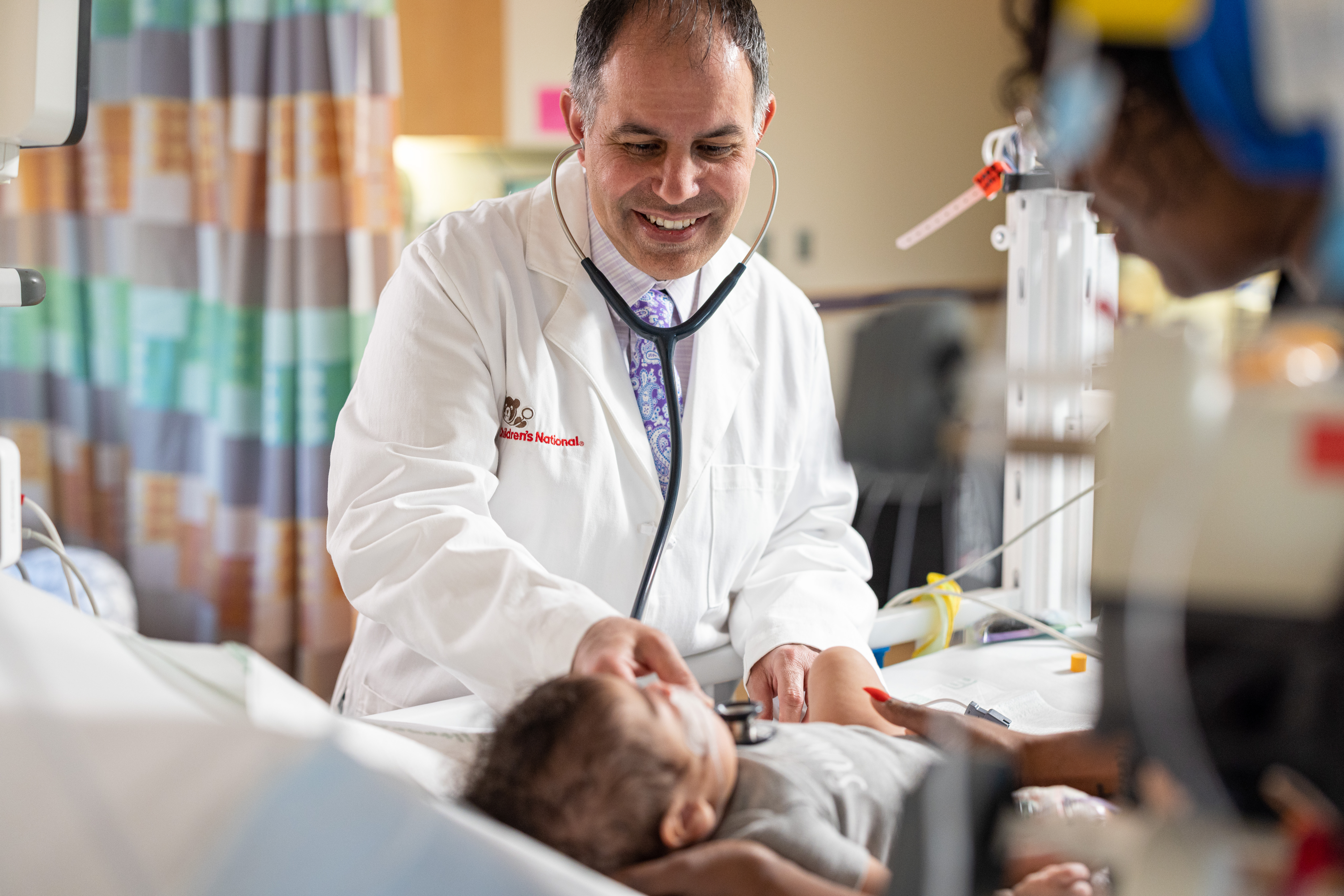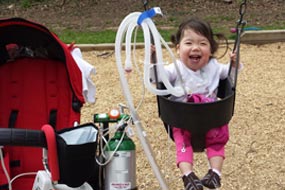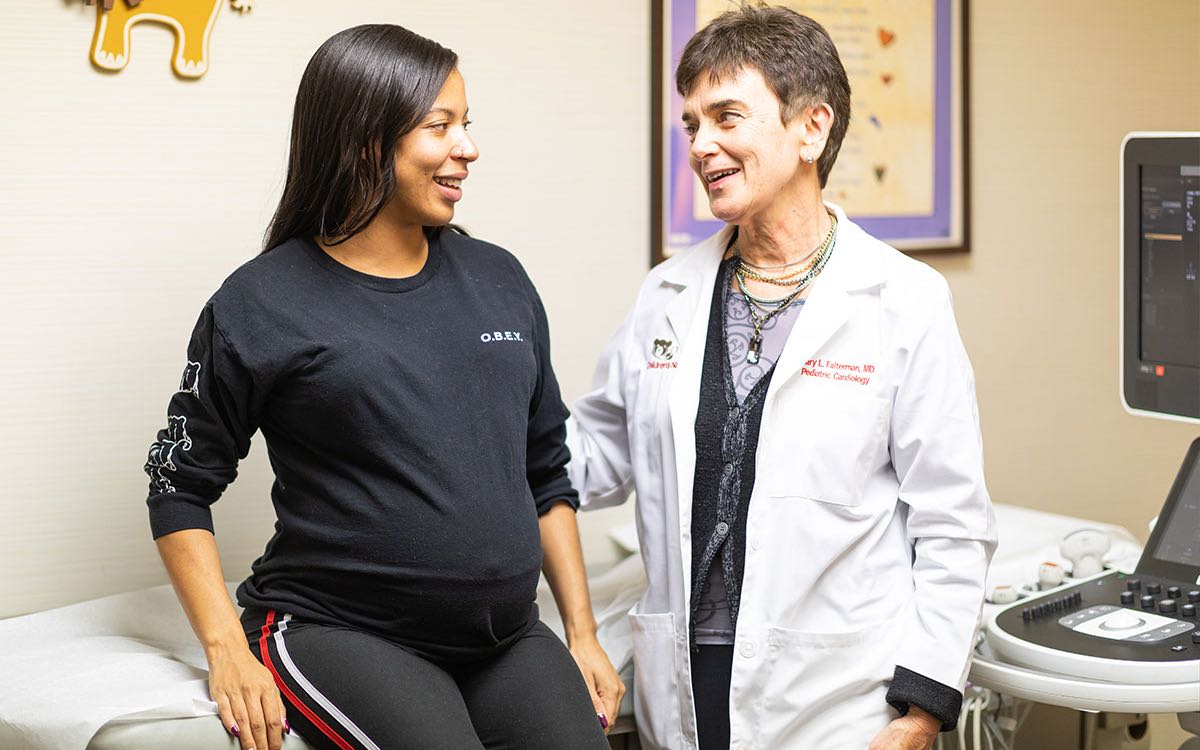Condition
Pediatric Patent Ductus Arteriosus (PDA)
What You Need to Know
PDA is a heart problem that is frequently noted in the first few weeks or months after birth. It is characterized by the persistence of a normal prenatal connection between the aorta and the pulmonary artery which allows oxygen-rich (red) blood that should go to the body to recirculate through the lungs.
Key Symptoms
Each child may experience symptoms differently. Symptoms may include:
- Fatigue
- Sweating
- Rapid breathing
- Heavy breathing
- Congested breathing
- Disinterest in feeding, or tiring while feeding
- Poor weight gain
Diagnosis
If your child's pediatrician may have heard a heart murmur and referred you to a cardiologist for diagnosis. The cardiologist may perform the following tests to help diagnose your child:
- Chest x-ray
- Electrocardiogram (ECG or EKG)
- Echocardiogram (echo)
- Cardiac catheterization
Treatment
Treatment typically includes:
- Medical management
- Adequate nutrition, such as high-calorie formula or breast milk
- Patent ductus arteriosus repair or closure

Schedule an Appointment
Our pediatric specialists provide personalized care for your child’s physical, mental and emotional health needs. Meet the providers who treat patent ductus arteriosus and schedule an appointment today.
Frequently Asked Questions
What is patent ductus arteriosus?
What causes patent ductus arteriosus in children?
Why is patent ductus arteriosus a concern in children?
What are the symptoms of patent ductus arteriosus in children?
How is patent ductus arteriosus diagnosed in children?
How is patent ductus arteriosus treated in children?
What should I expect from post-procedure care for my child's patent ductus arteriosus?
How can I care for my child at home following patent ductus arteriosus repair?
What is the long-term outlook after patent ductus arteriosus surgical repair for children?
Xiomara's Story
When Xiomara's mother Elena was 20 weeks pregnant, her ultrasound uncovered something that didn't look right. Elena was referred to Children's National Hospital to meet with Mary Donofrio, MD, in the Fetal Heart Program who flagged a few potential heart issues and continued to monitor Xiomara throughout the remainder of the pregnancy.
Departments that Treat Patent Ductus Arteriosus (PDA)

Cardiology
The pediatric heart experts at Children's National Hospital in Washington, D.C., provide advanced cardiology care for unborn babies, children and young adults with heart conditions. Learn more about this program.

Help Kids and Make a Difference
Invest in future cures for some of life's most devastating diseases. Give today to help more children grow up stronger.













